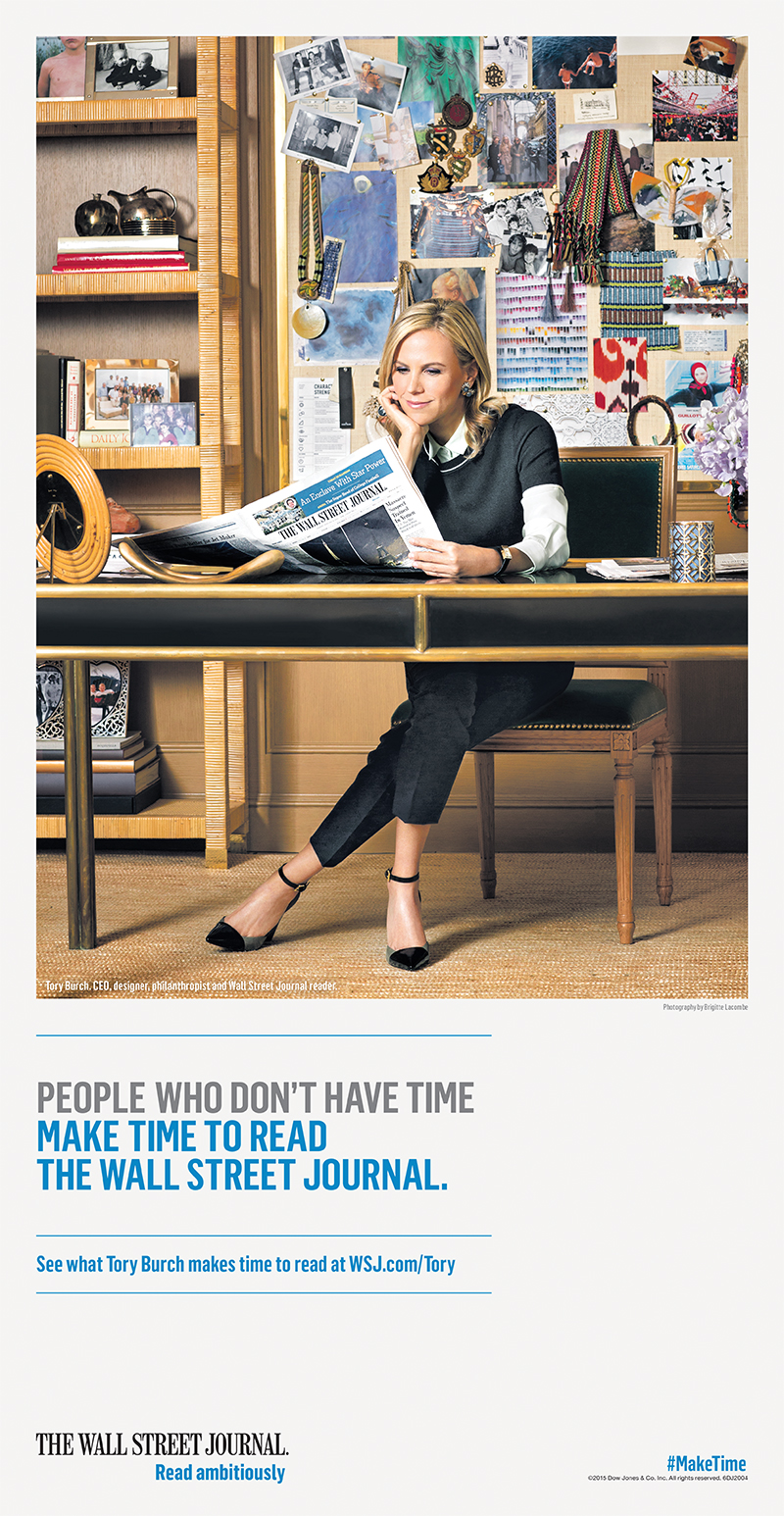Most of the advertising I see these days is really bad. Many companies and their ad agencies try to steal our attention with provocative statements and imagery. They adopt "attract the bugs to the lights" strategies instead of doing the hard work necessary to understand and connect with their tribes. That’s why I stopped dead in my tracks when I saw the Wall Street Journal’s new Make Time campaign. It's dang good. I stood in the subway and skipped the next train as I savored the simplicity and depth of the message. Am I a geek? Maybe. But I appreciate great craftsmanship. Here are a few thoughts on why this campaign is so effective and what we can learn from it.
The Campaign:
The messaging and storytelling is what makes this campaign so great. “People who don’t have time, make time to read the Wall Street Journal.” Sheer genius. The message reflects highly nuanced insights about the Wall Street Journal’s tribe. The WSJ tribe is made up of highly ambitious people who are busy leading, creating, and making an impact. These high performers don’t have leisure time to read a morning paper. But, they make time to read the WSJ because it helps them perform at their best. The message not only reinforces the tribe's beliefs, it handles customers' biggest product objection – time. It effectively reframes WSJ reading time as a professional investment.
The campaign supports the message with an artistically composed photo of Tory Birch (and other business leaders) reading the WSJ at work. Note that the photos depict people reading at work. The images support the message that the WSJ is a tool for career success – not an accompaniment for your Sunday morning coffee.
The subjects of the campaign are also carefully selected. The campaign creators chose Tory Burch (designer), Will.i.am (musician), Zhang Xim (CEO of Soho China), and Mike McCue (tech entrepreneur). Each of these individuals is an artist/creator as well as an ambitious business leader. The subjects suggest that the WSJ helps spark creativity and business savvy. They wisely did not include investment bankers or hedge fund managers in the campaign (despite the obvious connection given the paper's name). Finance professionals are, indeed, part of the WSJ tribe. However, featuring them in the campaign would lead the audience down a far less relatable path. It would suggest the WSJ is a tool for finance professionals instead of a tool for creative, ambitious people. Financial professionals can relate to Tory Burch’s ambition while non-finance professionals often have a hard time relating to the titans of finance.
The campaign supplements its out-of-home message with a digital experience. The landing page and videos reinforce the story with even higher fidelity. Here's the Tory Burch video:
The campaign concludes with a new tagline: “Read ambitiously.” I generally don’t like taglines because they are either too abstract or too cheeky to be meaningful. In this case, the tagline works. "Read" is a concrete verb and "ambitiously" perfectly describes the defining attribute of the WSJ tribe.
Key Takeaways:
The WSJ campaign offers a few great lessons for marketers, salespeople, and leaders.
1. Talk about your tribe, not yourself
We all tend to talk about ourselves when we should talk about our audiences. Most ads, sales pitches, and presentations are more about the company (or presenter) than the customer. Customers like hearing about themselves far more than they like hearing about vendors. So figure out what your audience cares about and talk about that. Your product or service is only useful insofar as it supports the beliefs of your tribe.
2. Don’t be average
Focus on extreme users, not average users. The WSJ campaign doesn't feature 9-5 employees who read the paper once a week. It focuses on creators and executives with no time who read it every day. Nobody is inspired by average. Yet we're tempted to say “our product is for everyone.” According to Seth Godin, the day of selling average products to average people is over. We need to be comfortable saying “our product may not be for you.” People who want a paper for a lazy Sunday should buy a USA Today.
3. Do the hard work
Clever jingles and creative stunts are poor substitutes for an in-depth understanding of our audience. We need to roll up our sleeves and listen. Only after we know what our audience truly cares about can we tell a story which resonates with them. Then we need to do the hard work of making the story simple. One of my graduate school professors regularly cites this quote by Oliver Wendall Holmes Jr.: “I would not give a fig for the simplicity this side of complexity, but I would give my life for the simplicity on the other side of complexity.” Distilling nuance and complexity into something simple is hard and incredibly powerful. There is no shortcut to success – we have to do the hard work.
What do you think about this campaign? Are there any others that similarly reveal an underlying truth?





